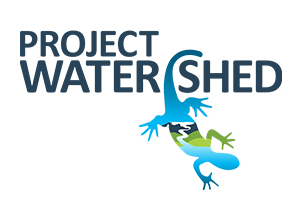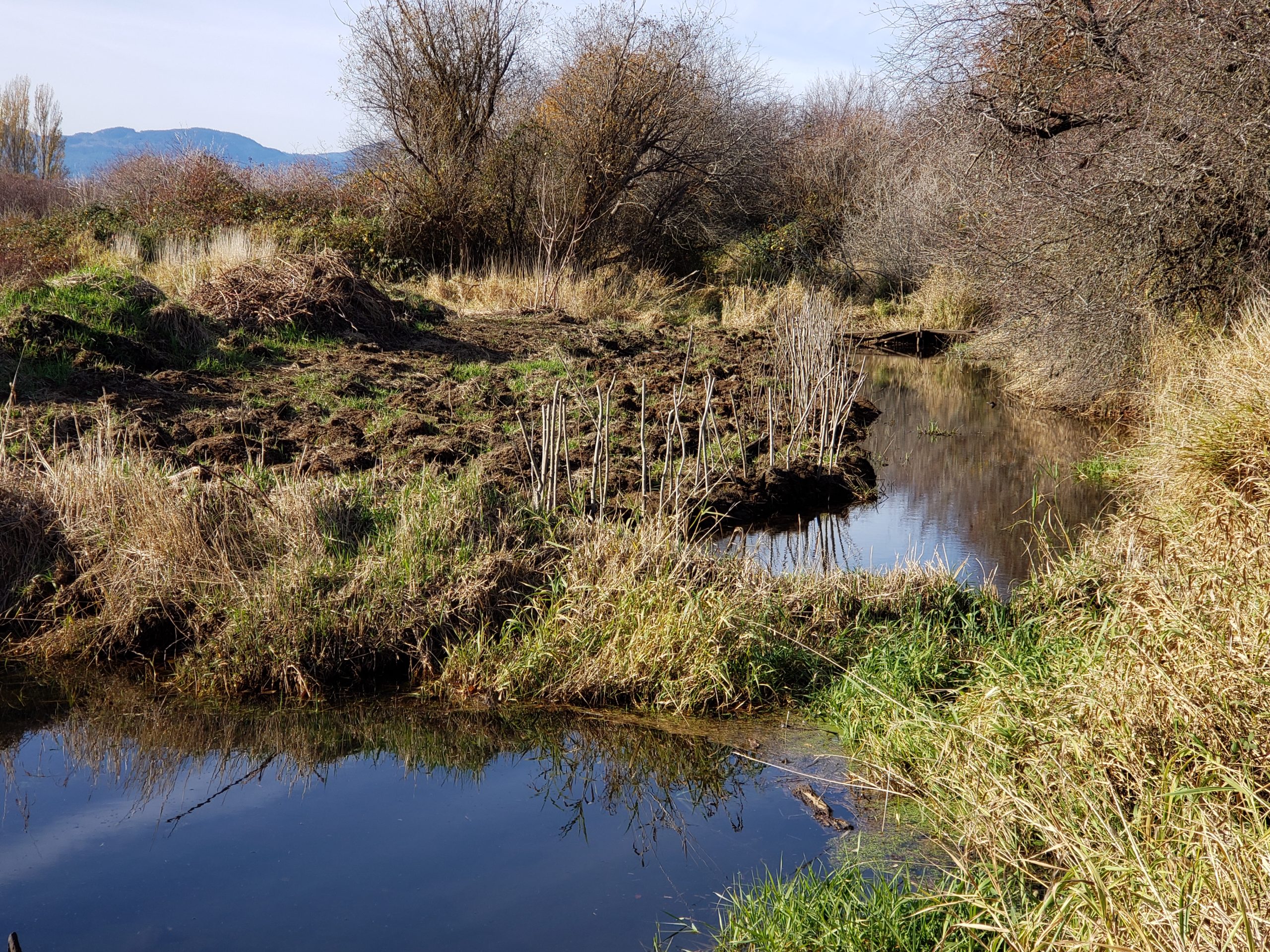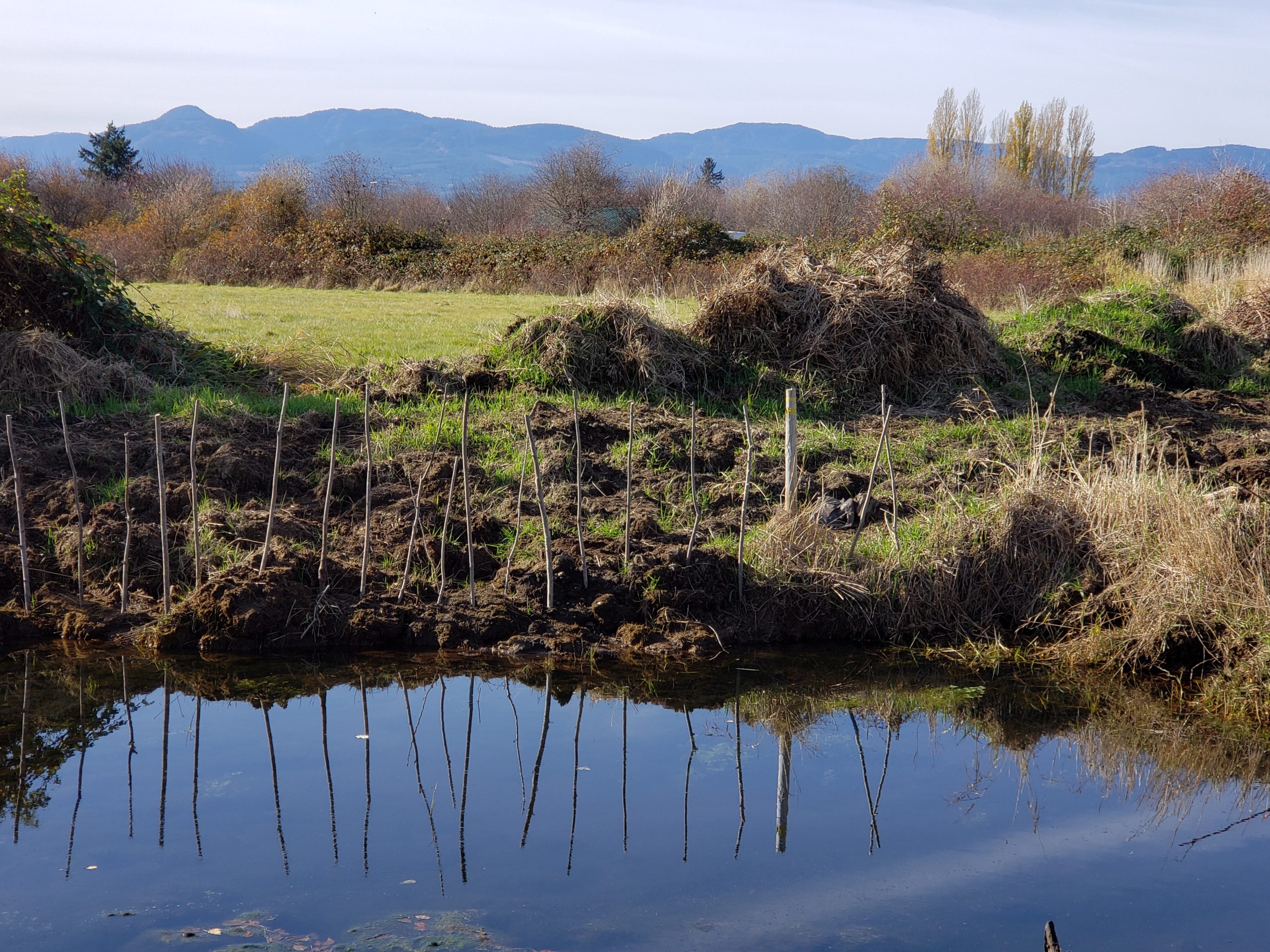Mallard Creek Restoration Update
Mallard Creek Restoration ~ By D. Brown
Live Willow Stakes Along the Banks of Mallard Creek ~ By D. Brown
Project Watershed has been working to restore Mallard Creek and improve the salmon habitat. It’s been a lot of work and we couldn’t have done it without the help of our amazing volunteers!
This summer, we used a small excavator to remove floating mats of invasive reed canary grass up to 18″ thick from the watercourse. The mats had grown over the entire channel and were limiting juvenile salmon and adult salmon from entering the stream. This work immediately benefitted juvenile coho using the Dyke Slough and over time, the plan is to restore full passage for both juveniles and spawners, allowing salmon to re-establish a run by spawning in the upper stream reaches.
This fall, right now in fact (October), the plan is to live-stake the margins of the newly cleared section of stream channel with willows. This will help shade out reed canary grass in future years and slow reinvasion of the stream. The long-term plan is to restore a healthy riparian buffer along the creek that will fully resist reinvasion by reed canary grass. In the meantime, increased riparian shading will improve rearing conditions for juvenile salmonids.
Live staking is fun, and you can see the effects of your work in a fairly short time frame. It can be a lot of work though – help is always appreciated!
Related Posts
Fall and Winter Forage Fish Sampling
We’re gearing up for the fall/winter season of forage fish sampling!
Mallard Creek Riparian Planting
We will be planting native riparian species along a section of Mallard Creek that we recently cleared of invasive Reed canarygrass.
Fall Planting at Kus-kus-sum
We are looking for volunteers to assist us with planting native trees, shrubs, and marsh plants at Kus-kus-sum this fall!
A New Day for Forage Fish
Project Watershed and the Coastal Forage Fish Network (CFFN) are celebrating Surf Smet Day on October 25th! This adds another day on which to celebrate and raise awareness about beach spawning forage fish as Pacific sand lance are celebrated on a day in December.
Fall Work at Kus-kus-sum
We are looking for volunteers to assist us with weeding out invasive plants to make room for the native plants arriving later this fall!
Forage Fish Survey Techniques Workshop
The Coastal Forage Fish Network (CFFN) is hosting two one-day workshops to introduce development considerations and methods to survey for beach spawning forage fish for projects that may impact beach spawning forage fish.



